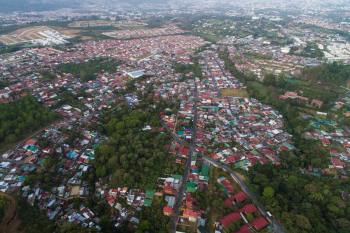Type of involvement:
Citizens have an active role in the transformation of the environment and the generation of scientific data. The people of the communities can be part of the governance of the Biological Corridors by participating in the Local Committees. The Local Committees are spaces of participation established for the management and consolidation of the Biological Corridors. They are integrated by at least the following sectors: a representative of SINAC, Non-Governmental Organizations, grassroots organizations, productive, governmental institutional, municipalities and private: other interested actors may also participate.
Additionally, they are involved in the design, execution and maintenance of the projects.
Type of non-governmental actors involved:
Citizen councils or consultation for co-planning (e.g. workshops, surveys)
Citizen oversight (e.g. boards, advisory role)
Co-design of NBS, implemented by government
Implementation of NBS (e.g. with government funds)
Citizen monitoring and review
Citizen science
Targeted actors:
Public sector institution (e.g. school or hospital)
Private: household, real estate developer, business , financial
Researchers, university
Citizens or community groups (CBOs), NGOs, NGOs, etc.
How the instrument fits within the wider policy framework:
The Biological Corridors are a key element for the advancement of the objectives of local governments in the area of SBN, urban planning and ecological restoration, and the instrument is also part of the country's strategy to comply with the 2030 Agenda and the SDGs. Decree 40043-MINAE has as its antecedent the Mesoamerican Biological Corridor initiative that emerged from a Summit of Central American Presidents held in 1997 in Panama City. The subscribing countries committed to a frame of reference and to elaborate an instrument to protect the protected areas of the countries to create a Mesoamerican biological corridor for the transit of flora and fauna (especially thinking about the Puma and the Jaguar, which are the largest felines in the area). This corridor is intended to extend from the Darien Jungle on the Colombia-Panama border to the Mayan jungle in southeastern Mexico. In addition, this instrument is intended to be used to promote economic development through the sustainable use of natural resources and integrated and planned ecological restoration of the landscape. In Costa Rica, decree 40043-MINAE establishes three types of biological corridors. There is a National Program of Biological Corridors that contemplates three categories: 1.Biological Corridors 2. Interurban Biological Corridors 3. These three categories are administered through local committees made up of public and private actors according to the needs of the territory. With this instrument Costa Rica complies with multiple international agreements on environmental matters and at the national level it has as a basis the Biodiversity Law 7788 of 1998.


